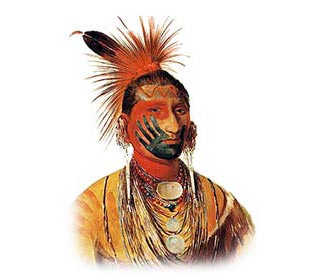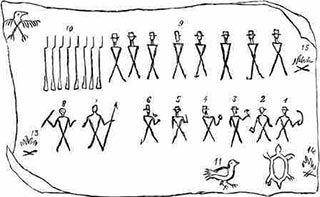|
|
A pictogram is a therefore a form of writing which uses drawings to tell a story. A pictogram was not an exact record and often only understood as a memory help to those who knew the original story and understood the meanings of the symbols that had been used. Materials used for a Pictogram Pictogram taken from a Pawnee robe Pictogram - Picture Dictionary of Symbols and Signs Use of the Pictogram - Children and Kids Examples of the Pictogram |
|
Native American Indian Birch Bark Pictogram drawing |
Native American Pictogram - Henry Longfellow The famous epic poem by Henry Longfellow called “The Song of Hiawatha” was based on the hero Hiawatha who established the Iroquois Confederacy. Henry Longfellow was deeply interested in pictograms and pictography, and gave a brief example and description of nine common symbols used in pictograms in the following verse from Hiawatha. For the earth he drew a straight line, For the sky a bow above it; White the space between for day-time, Filled with little stars for night-time; On the left a point for sunrise, On the right a point for sunset, On the top a point for noontide, And for rain and cloudy weather Waving lines descending from it. |
| Native American Symbols |
| Native Indian Art |
| Native Indian Tribes Index |
|
First Published2016-04-19 | ||
Updated 2018-01-01 | Publisher Siteseen Limited | |
|

